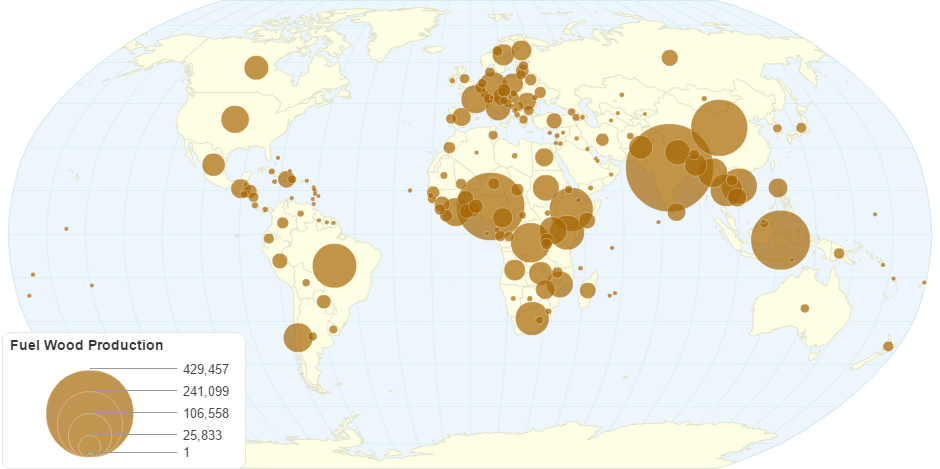This chart shows Fuel Wood Production by Country.
Fuelwood is a fuel, such as firewood, charcoal, chips, sheets, pellets, and sawdust. The particular form used depends upon factors such as source, quantity, quality and application. In many areas, wood is the most easily available form of fuel, requiring no tools in the case of picking up dead wood, or few tools, although as in any industry, specialized tools, such as skidders and hydraulic wood splitters, have been developed to mechanize production. Sawmill waste and construction industry by-products also include various forms of lumber tailings.
The discovery of how to make fire for the purpose of burning wood is regarded as one of humanity's most important advances. The use of wood as a fuel source for heating is much older than civilization and is assumed to have been used by Neanderthals. Today, burning of wood is the largest use of energy derived from a solid fuel biomass.
Wood fuel can be used for cooking and heating, and occasionally for fueling steam engines and steam turbines that generate electricity. Wood may be used indoors in a furnace, stove, or fireplace, or outdoors in a furnace, campfire, or bonfire.
Much wood fuel comes from native forests around the world. Plantation wood is rarely used for firewood, as it is more valuable as timber or wood pulp, however, some wood fuel is gathered from trees planted amongst crops, also known as agroforestry.
The collection or harvesting of this wood can have serious environmental implications for the collection area. The concerns are often specific to the particular area, but can include all the problems that regular logging create. The heavy removal of wood from forests can cause habitat destruction and soil erosion.
9 years ago

